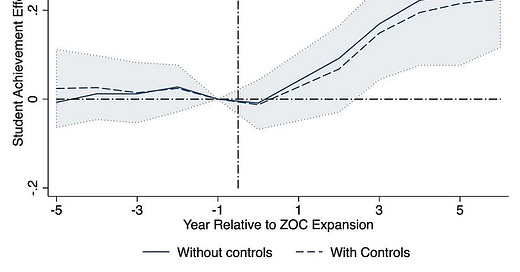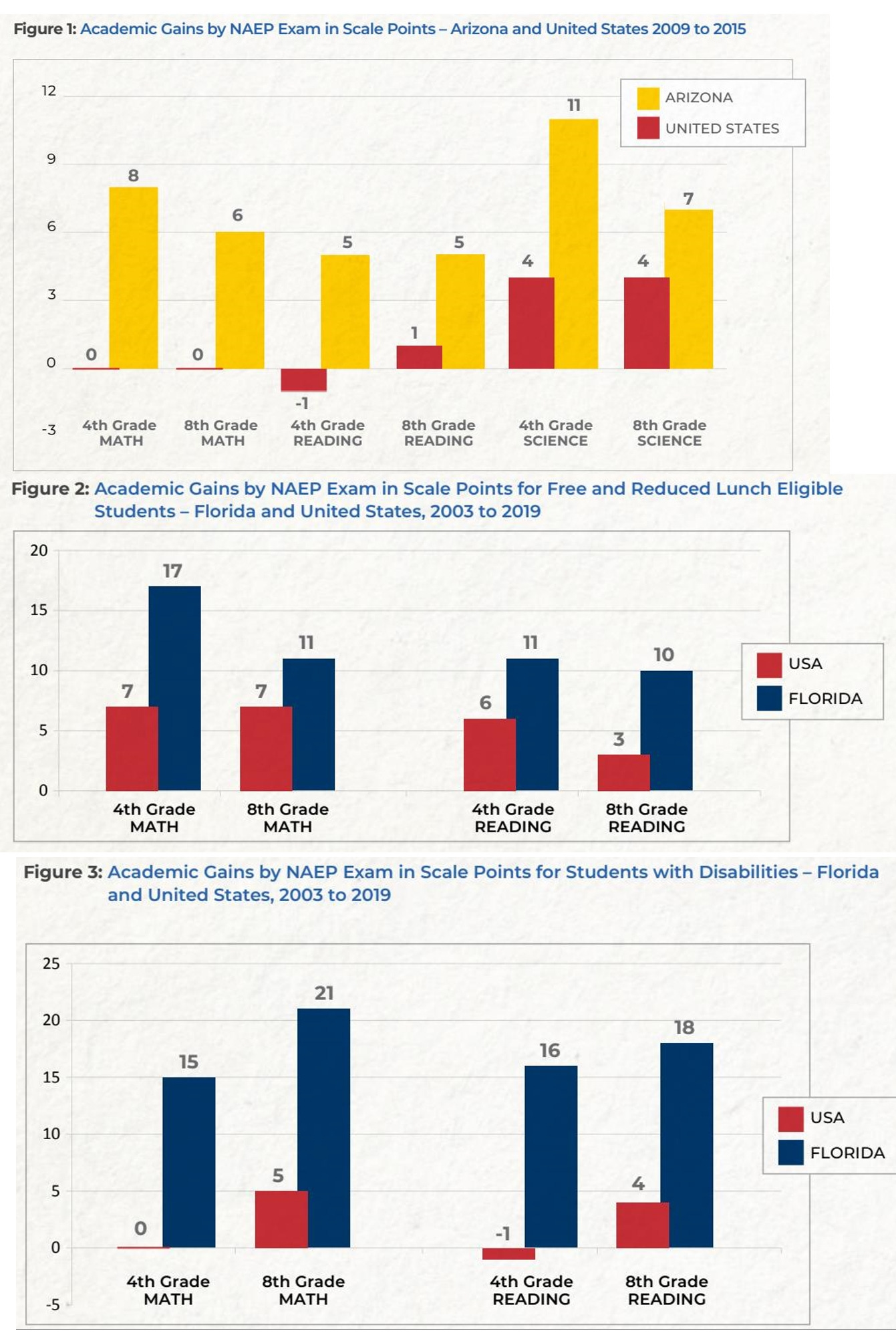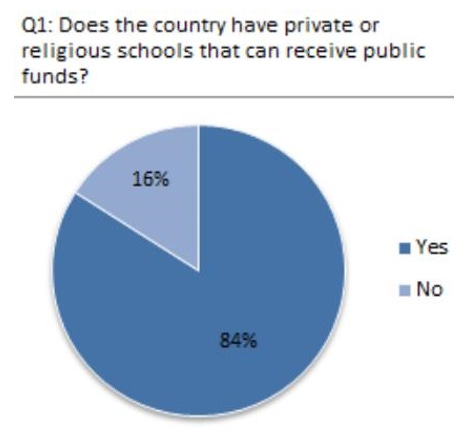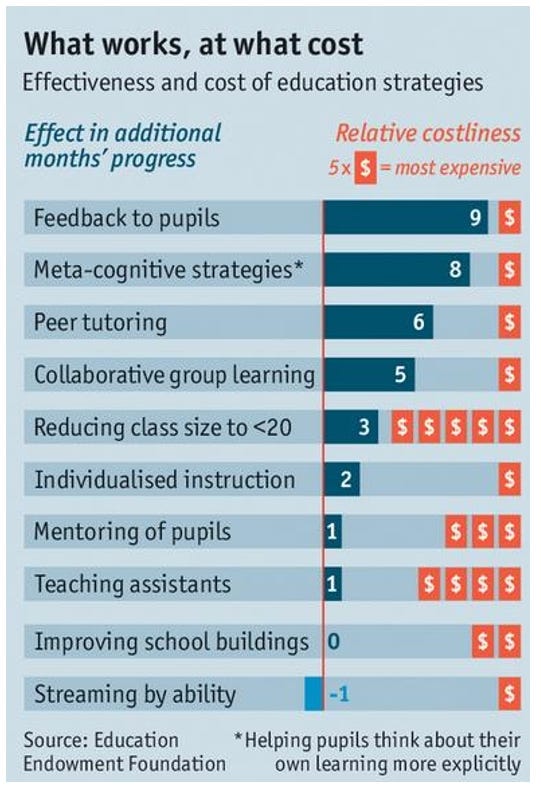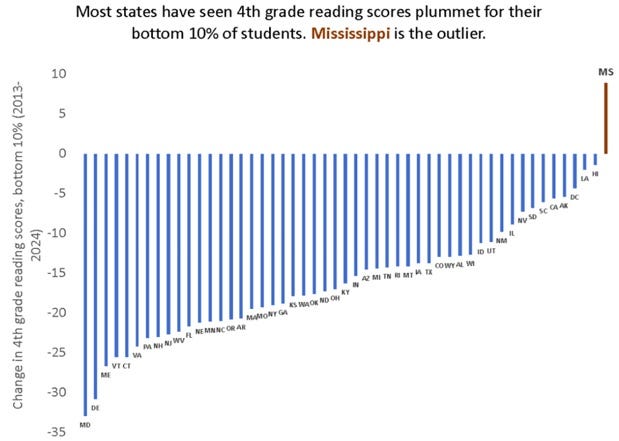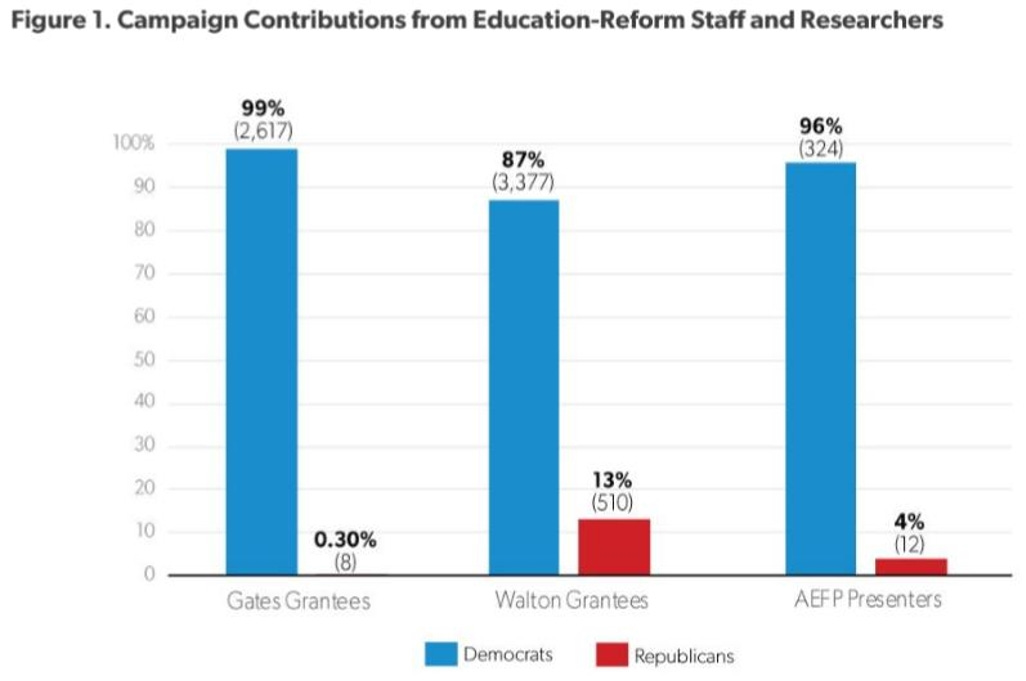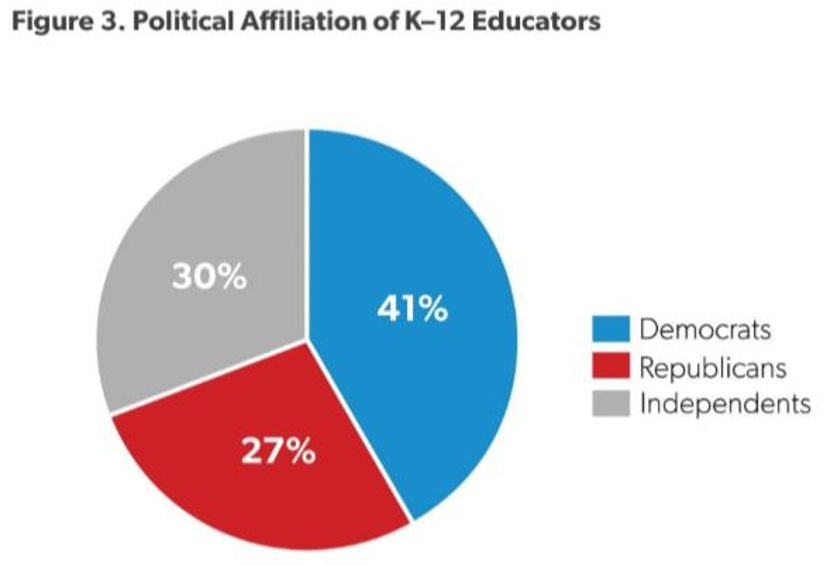Studies show that school choice programs that allow parents to use public funds to send their children to either public or private schools have largely positive benefits. Research published in the Massachusetts Institute of Technology’s Education Finance and Policy journal, for example, shows that the federal school choice program in Washington, D.C. returns $2.62 in benefits for every $1 spent, primarily by producing increased graduation rates.
A survey of all the economic literature on school choice voucher programs, including programs in other countries, published in the Journal of Economic Literature found that “vouchers can have a substantial positive effect on those who use them,” and that “[t]he most robust finding is that voucher threats induce public schools to improve.”
Researchers at Berkeley studying the Los Angeles school choice program reported the following results:
This paper evaluates the Zones of Choice (ZOC) program in Los Angeles, a school choice initiative that created small high school markets in some neighborhoods but left traditional attendance zone boundaries in place throughout the rest of the district. We leverage the design of the program to study the impact of neighborhood school choice on student achievement, college enrollment, and other outcomes using a matched difference-in-differences de-sign. Our findings reveal that the ZOC program boosted test scores and college enrollment markedly, closing achievement and college enrollment gaps between ZOC neighborhoods and the rest of the district. These gains are explained by general improvements in school effectiveness rather than changes in student match quality, and school-specific gains are concentrated among the lowest-performing schools.
Researchers have also found that “Higher levels of education freedom are significantly associated with higher NAEP achievement levels and higher NAEP achievement gains” between 2003 and 2019 in all of their models.
According to a survey of 50 countries, the United States is one of the few countries in the world that doesn’t generally allow private or religious schools to receive public funds among state and local education programs.
A summary of research on improving teaching outcomes found that some of the most expensive proposed solutions are actually the least effective.
The largest federal investment of federal dollars ever targeted to failing schools -- the School Improvement Grants program – spent $7 billion from 2010 to 2015 and resulted in no gains at all in failing schools, according to the Obama Administration’s own analysis, concluding that “Overall, across all grades, we found that implementing any SIG-funded model had no significant impacts on math or reading test scores, high school graduation, or college enrollment.”
Mississippi made remarkable gains in reading when the state required alerting parents to their child’s reading deficiencies and holding back kids who couldn’t read in third grade. As Chad Aldeman writes:
The chart below shows the change [in reading scores] from 2013 to 2024 in the scores for the bottom 10% of students in each state. For this group, 40 states saw a decline of 10 points or more, 16 saw declines of 20 points or more and two states — Delaware and Maryland — had declines of more than 30 (!) points.
But one state is bucking this trend: Mississippi. Indeed, there’s been a fair amount of coverage of Mississippi’s reading progress in recent years, but its gains are so impressive that they merit another look. First, it’s worth remembering that Mississippi is the poorest state in the country. Its per-capita income is below $50,000, and it spends less on its public schools than all but three states. But when the Urban Institute adjusted NAEP scores based on each state’s demographics, Mississippi’s fourth-grade reading scores came out on top. Even without those adjustments, though, Mississippi looks pretty great. Its Black students rank third nationally, and its low-income kids outperform those in every other state. Mississippi is also the only state to see gains across all performance levels over the last decade. Its average went up, but so did the scores of its highest and lowest performers. Mississippi raised the bar and the floor at the same time. So how did they do it? How did Mississippi go from 49th in the country a decade ago to near the top today? And what can other states learn from it? According to a recent piece by Grace Brazeale, a policy associate with the advocacy group Mississippi First, the state implemented a series of changes starting with the 2013 Literacy-Based Promotion Act. That law funded the state department of education to hire, train and deploy literacy coaches to the 50 lowest-performing schools. It also required schools to administer universal screenings to identify students with reading deficiencies early and to communicate those results to parents, and it required schools to hold back students who were not reaching a certain threshold by third grade. These changes were not all that expensive, but they had big effects. EdWeek’s Elizabeth Huebeck reported in 2023 that the state spent $15 million per year to support its literacy work, and 60% of that went to coaching and intervention staff. A research paper last fall from Noah Spencer from the University of Toronto found that the law helped drive the state’s gains. Spencer estimated that the third-grade retention policy alone could be responsible for about one-quarter of the gains, and it was surely the most controversial element. Some people have even tried to cast doubt on Mississippi’s NAEP gains by arguing they’re merely a function of testing older kids. But this has been debunked: Mississippi does hold back more kids than other states, but it always has, and the average age of Mississippi’s NAEP test-takers has barely budged over time … I think what matters most is not the students who are retained, but what the policy does to adult behavior. Mississippi required schools to notify parents when their child was off track and to craft individual reading plans for those with reading deficiencies. In other words, the threat of retention may have shifted behavior in important ways. As evidence for that theory, consider that a study out of Florida also found positive effects on younger siblings of students who are retained.
Generally, any educational reform becomes more difficult when public sector unions give money to candidates who support the large government programs they tend to benefit from, and work for the political campaigns of such candidates, potentially trading political spending for greater taxpayer-paid benefits.
Interestingly, Frances Perkins, the first female Cabinet Secretary who ran the Labor Department under President Franklin D. Roosevelt and was the lead federal official behind the major New Deal legislation, was severely disappointed at how the creation of unions as exclusive bargaining units came to be. In her biography of Frances Perkins, The Woman Behind the New Deal: The Life of Frances Perkins, FDR’s Secretary of Labor and His Moral Conscience, Kirstin Downey describes how the federal law recognizing unions as exclusive bargaining units grew haphazardly out of FDR’s National Recovery Act, which created a “bizarre corporate-state scheme, with the government as puppet master.” As Downey writes:
Textiles became the first of many industries to undergo the process of obtaining government approval for a wage and hour code … Frances wanted to give workers a formal place at the table in this new orchestrated arrangement between government and employers. [Other FDR officials] were paternalistically attentive to workers’ welfare, but they considered it ridiculous to include labor representatives in the negotiations. Even Frances agreed that the existing textile union, the skeletal United Textile Workers, was a “set of lunatics and grafters,” and many of the other unions were too feeble to be effective. So Frances suggested they set up a labor advisory committee. With the backing of the AFL, Frances appointed the labor representatives and found substitutes if no legitimate unions could be found to represent worker interests. In this way, the right of unions to organize originated in the NRA bill, and almost by accident.
And it’s very difficult to undo the damage caused by what local governments and public sector unions agree to. As Frederick Hess points out:
In the private sector, when legacy decisions leave ventures struggling with inflated costs, bad contracts, or rigid business models, firms have a chance to reinvent themselves through bankruptcy. Chapter 11 bankruptcy has given countless corporations legal sanction to downsize costly operations, revisit contracts, and modify long-established but anachronistic practices. That same option is not widely available to school systems. There are many reasons for this state of affairs, but a significant one comes from mid-1990s revisions to the bankruptcy code, which made it possible for states to block municipalities from filing for Chapter 9 bankruptcy — the kind of bankruptcy available to school districts. Currently, fewer than half of states allow school districts or other municipalities to file for bankruptcy. Between that restriction and their general aversion to risk, the nation's 14,000 school districts simply do not avail themselves of Chapter 9 bankruptcy, no matter how grim the circumstances become. So while private businesses can fail and thereby leave room for new entrants to the market, school districts are functionally immortal. This means that bad contracts, regrettable vendor agreements, and ill-conceived school-board policies never disappear. Experts in bankruptcy law note there exists substantial opportunity to restructure school systems through Chapter 9 should they choose to act. The first step, of course, would be for more states to authorize school districts to file for bankruptcy. There is also a place for more expansive federal action. After all, the U.S. Constitution vests Congress with the authority to set a uniform bankruptcy code precisely because providing individuals, businesses, and communities with the opportunity for a fresh start is integral to maintaining the national fabric.
And beyond public sector unions, groups that claims to promote educational reform are overwhelmingly dominated by supporters of the Democratic party, which is the political party most closely allied with the teachers’ unions. As Frederick Hess points out:
Today's education debates are dominated by voices well to the left of the nation as a whole. Although the ideological views of K-12 teachers broadly reflect those of the nation, this is decidedly not the case when it comes to teachers' union leadership, college faculty, administrators, advocates, and funders. Even the once-bipartisan world of K-12 reform has taken on a deep blue hue, with a 2019 analysis finding that staff at more than 200 major school-reform organizations support Democratic candidates and causes over their Republican counterparts by better than a nine-to-one margin (about the same ratio as teachers’ unions do, in fact).
In 2019, researchers analyzed the campaign contributions of the employees at a wide swath of education-reform organizations, including Teach For America and major charter-school operators, and, as Frederick Hess summarizes, found that:
More than 90 percent of the thousands of contributions we studied, made over many years, flowed to Democrats. It appears that school reformers today are more uniformly partisan than even the National Education Association, the largest teachers’ union -- indeed, the largest union of any kind -- in the United States. This is a massive change from what the reform community looked like 20 years ago. Back in 2000, for instance, political-campaign contributions by employees at a similar sample of organizations were closer to evenly split between Democratic and Republican candidates. It’s hard to pin down precisely what changed -- though it’s fair to say that it’s partly a tale of … an emboldened Left driving Republicans out of the movement by prioritizing identity politics and heavy regulation ... In seeking to win the intramural fight on the left, both union and reform Democrats have taken to one-upping each other by staking out positions farther and farther left on hot-button cultural issues. As they’ve done so, reformers have seemingly gone out of their way to alienate Republicans. Indeed, today’s reformers have been engaged in noteworthy efforts to soften school discipline, conscript schools into progressive battles over sexual orientation and gender identity, and enlist schools as outspoken … critics of ICE.” The researchers also found that the staff and researchers at the largest education reform organization overwhelmingly favor Democrats in their campaign contributions, whereas the political affiliation of K-12 teachers themselves is much more mixed.
Indeed, there is a large disconnect between the education policy views of even rank-and-file Democrats and their party’s platform. As reported in the Wall Street Journal:
According to a survey by two Harvard professors, in contrast to Democratic Party policies, 80% of rank-and-file Democrats who took a position on the issue said they backed the federal requirement that “all students be tested in math and reading each year,” with only 20% disagreeing. Republicans had similar responses: 74% and 26%, respectively. As for punishing and rewarding teachers, 57% of Democrats nationwide said they supported “basing part of the salaries of teachers on how much their students learn.” Fifty-nine percent said teacher tenure should be eliminated. When asked whether they favored “letting parents decide whether to have their children take state math and reading tests,” 71% of Democrats said they did not. So did 69% of Republicans. Also, 61% of Democrats around the country oppose federal policies that “prevent schools from expelling and suspending black and Hispanic students at higher rates than other students.” So do 86% of Republicans, and a majority of both African-American and Hispanic respondents who take a side.
This concludes the essay series on K-12 education.
Links to all essays in this series: Part 1; Part 2; Part 3; Part 4; Part 5; Part 6

